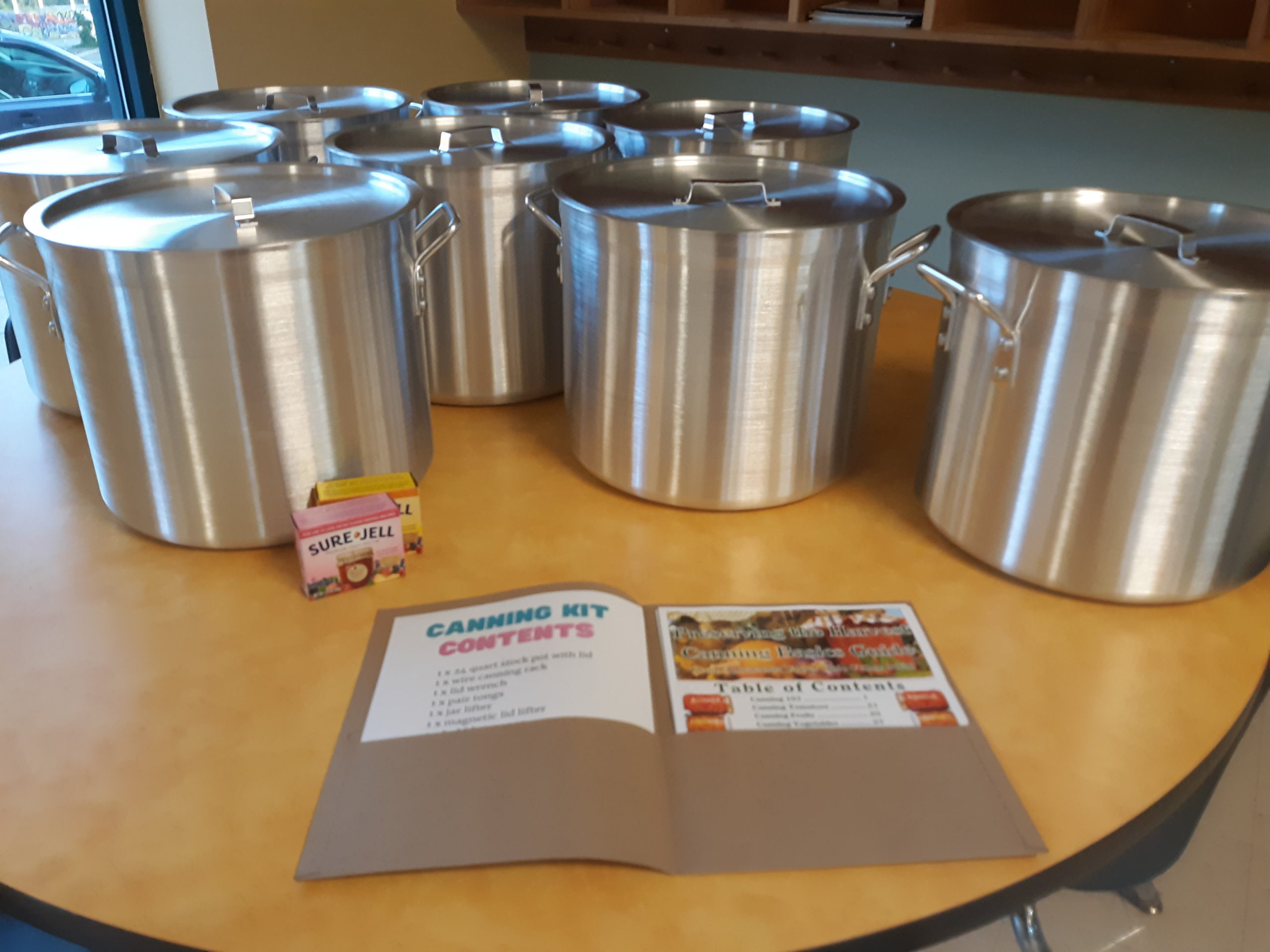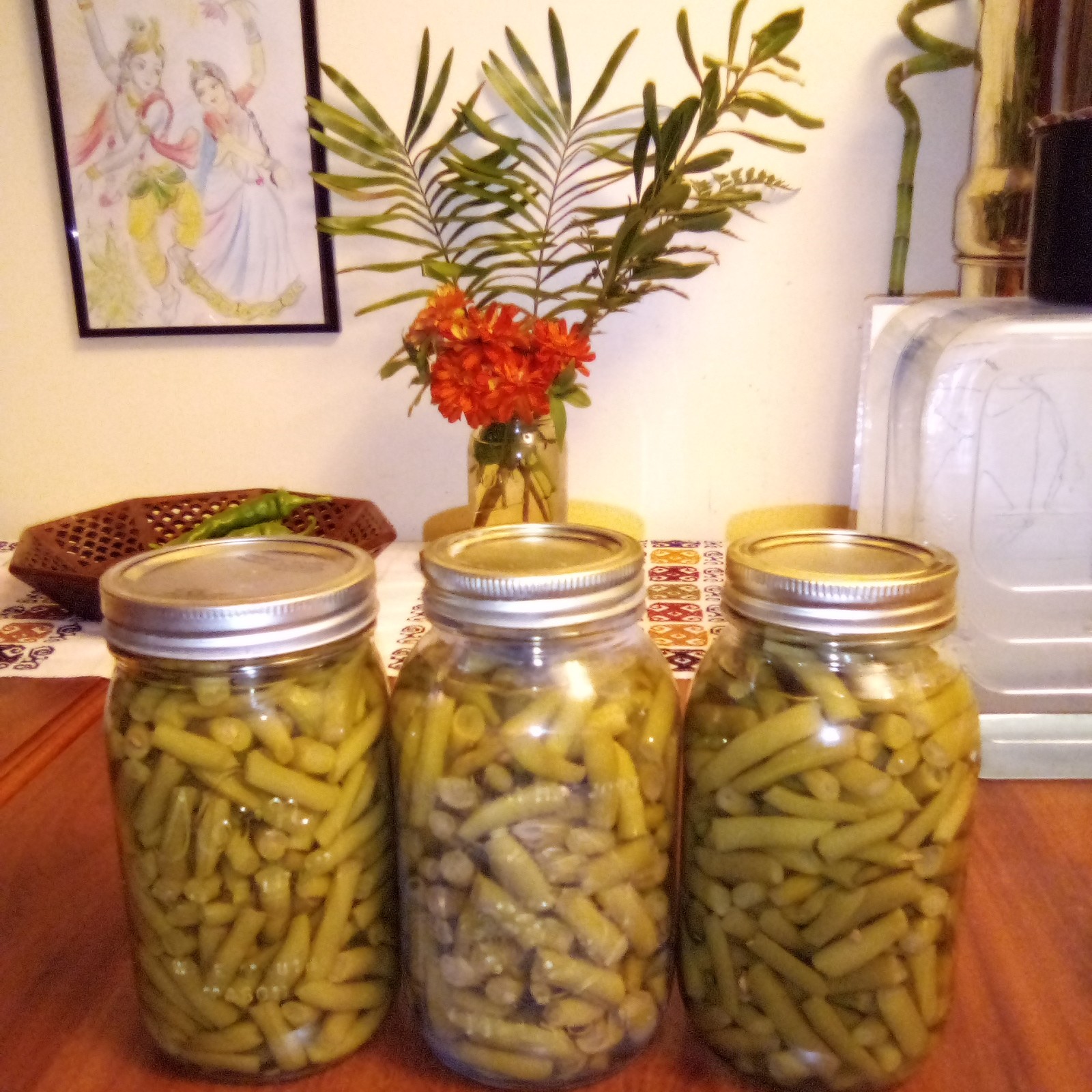
As the harvest begins winding down, we begin looking for ways to capture the taste of a summer garden all year long. One of the most tried and true ways of preservation is canning, either by pressure or water bathing. Canning is becoming increasingly more popular since the pandemic with the return to our agricultural roots. Mason jars are currently worth their weight in gold, as it is nearly impossible to find any supplies left on store shelves.
Precise Preservation
While it’s exciting to watch everyone get in on the fun, canning requires a little bit of skill and a lot of precise conditions to safely preserve the harvest. While Hannah and I (Phoebe) have done at home canning for ourselves, we reached out to our partners at WVU Extension Office in Marshall County to lead us in our in person canning class.
Extension Agent Extravaganza
Cheryl Kaczor, Family and Community Development Agent for Marshall County led our canning class on September 2nd at a local after school program’s kitchen that we do curriculum with throughout the year. Cheryl led the group in how to can tomatoes in a water bath, and provided resources on how to can safely. Cheryl even provided recipes approved by USDA that have tested basic canning ingredients and procedures and how to use them to achieve safe, high-quality canned products.
Grow Appalachia Goodies
In addition to Cheryl’s canning basics folder that included the USDA approved recipes, Grow Appalachia provided some swag of their own. Participants of the canning class were given a canning kit to take home with them that consisted of: 20 quart stock pot, 7 piece utensil kit, pickling salt, pectin, citric acid, vinegar, and a couple cases of canning jars of various sizes. Our students had an array of knowledge with varying degrees of canning knowledge, but all seemed to enjoy receiving the new kits to ramp up their production abilities.

Caught on Camera
Some of our canning kits have already been put to use! One of our participants who was unfortunately unable to attend the class in person, but didn’t want to miss out on the fun, and sent us photos of their finished products! Throughout the season we have received photos from our participants with subject matters of breaking ground to harvest hauls. The Upper Ohio Valley has 4 counties in it’s service zone so this is a way we can stay safely connected to our participants and their corner of the Panhandle.

Canning Conclusions
This was by far my favorite class we’ve hosted so far for our participants. I’ve enjoyed getting to see everyone’s faces outside of the Zoom boxes, and celebrate our harvest by extending the time we get to enjoy the fruits of our labor. While there isn’t anything quite like a garden fresh veggie, canning is the next best way to preserve that homegrown flavor you can’t find in supermarkets. We are hoping to do another preservation class of alternative methods such as dehydrating, fermentation, cellar storage, and freezing to provide variation for our participants. I feel as if I learned a lot from Cheryl, and have the itch to get into the kitchen and get the last bits of the harvest season jarred and stored for winter.




Leave A Comment